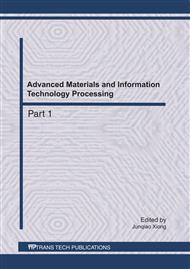p.1612
p.1618
p.1624
p.1629
p.1633
p.1638
p.1644
p.1647
p.1651
The Study of Computer Fundamental Experiment Teaching Model Based on MOODLE
Abstract:
The study of Computer Fundamental Experiment teaching model based on Moodle is to use Collaborative Knowledge Building idea into experiment teaching so that we can give priority to the students on design and organization in the course; the teacher and the students can cooperate each other and join to collaborate the new knowledge system from former knowledge and experience, thereafter get the final point of view, idea and method etc. intelligence works. It was shown by some examples that Computer Fundamental Experiment teaching model based on Moodle had quit a few theoretic and practical value on leading students to take design, study and creation style experiments as well as to improve the students’ capability on analyze and solving problem.
Info:
Periodical:
Pages:
1633-1637
Citation:
Online since:
July 2011
Authors:
Price:
Сopyright:
© 2011 Trans Tech Publications Ltd. All Rights Reserved
Share:
Citation:


